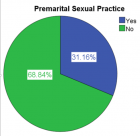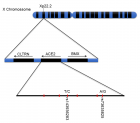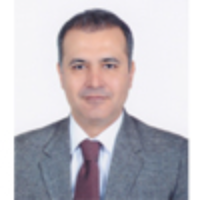Abstract
Research Article
The thoracoscopic approach in the management of parapneumonic pleural effusion in children
Taycir Cheikhrouhou*, Mahdi Ben Dhaou, Amal Elleuch, Manar Hbaieb, Mohamed Zouari, Mahfoudh Abdelmajid and Riadh Mhiri
Published: 23 December, 2022 | Volume 6 - Issue 2 | Pages: 025-029
Background: Parapneumonic pleural effusion is a relatively common entity and continues to be a major cause of morbidity in children. However, managing this disease is still a matter of controversy between surgical and non-surgical options. With the advancement of mini-invasive surgery, video-assisted thoracoscopic surgery (VATS) has become a mainstay in the treatment of parapneumonic effusion in children. This study aimed to evaluate the clinical characteristics and pathological features of parapneumonic pleural effusion in children and to explore the feasibility and safety of the thoracoscopic approach in the pediatric population.
Methods: The clinical data of all patients who underwent VATS for parapneumonic effusion between 2007 and 2021 were analyzed retrospectively. Factors that were documented included demographic criteria, clinical manifestations, preoperative examinations, therapeutic procedures, intraoperative findings, postoperative complications, and outcomes.
Results: Totally, 35 patients with a mean age of 5.14 ± 3.9 years were operated on thoracoscopically. The mean duration of evolution before VATS was 9 days ± 4. All children were hospitalized in a Pediatric Continuing Care Unit. Antibiotic therapy was administrated in combination in all cases. Corticosteroid therapy was used in 2 patients. Thoracentesis was performed in 6 patients. Thoracostomy tube drainage was placed before surgery in 11 patients. The average duration of drainage before VATS was 6 days ± 4. VATS decortication and/or debridement was indicated as second-line in 23 patients. The average duration of the surgery was 51 minutes (20 min - 115 min). There is no conversion to open surgery and no intraoperative procedure-dependent complication. 4 children have early complications after the VATS and one patient had a late postoperative complication. There were no deaths during the hospital stay or follow-up.
Conclusion: In skilled hands, VATS is safe, feasible, and effective in the management of parapneumonic pleural effusion in children with excellent outcomes.
Read Full Article HTML DOI: 10.29328/journal.jprr.1001041 Cite this Article Read Full Article PDF
Keywords:
Parapneumonic pleural effusion; Empyema; Thoracoscopy; Children
References
- Light RW. Parapneumonic effusions and empyema. Proc Am Thorac Soc. 2006;3(1):75-80. doi: 10.1513/pats.200510-113JH. PMID: 16493154.
- Kurt BA, Winterhalter KM, Connors RH, Betz BW, Winters JW. Therapy of parapneumonic effusions in children: video-assisted thoracoscopic surgery versus conventional thoracostomy drainage. Pediatrics. 2006 Sep;118(3):e547-53. doi: 10.1542/peds.2005-2719. Epub 2006 Aug 14. PMID: 16908618.
- Hendaus MA, Janahi IA. Parapneumonic Effusion in Children: An Up-to-Date Review. Clin Pediatr (Phila). 2016 Jan;55(1):10-8. doi: 10.1177/0009922815589917. Epub 2015 Jun 7. PMID: 26054782.
- Thimmesch M, Mulder A, Lebrun F, Piérart F, Genin C, Loeckx I, Demaret P. Management of parapneumonic pleural effusion in children: Is there a role for corticosteroids when conventional nonsurgical management fails? A single-center 15-year experience. Pediatr Pulmonol. 2022 Jan;57(1):245-252. doi: 10.1002/ppul.25699. Epub 2021 Sep 29. PMID: 34559458.
- Buckingham SC, King MD, Miller ML. Incidence and etiologies of complicated parapneumonic effusions in children, 1996 to 2001. Pediatr Infect Dis J. 2003 Jun;22(6):499-504. doi: 10.1097/01.inf.0000069764.41163.8f. PMID: 12799505.
- Barglik R, Grabowski A, Korlacki W, Pasierbek M, Modrzyk A. Pleural empyema in children - benefits of primary thoracoscopic treatment. Wideochir Inne Tech Maloinwazyjne. 2021 Mar;16(1):264-272. doi: 10.5114/wiitm.2020.97443. Epub 2020 Nov 26. PMID: 33786143; PMCID: PMC7991945.
- Huang JX, Chen Q, Hong SM, Hong JJ, Cao H. Uniportal Thoracoscopic Debridement for Children With Refractory Pleural Empyema: Case Series of 21 Patients. Front Pediatr. 2021 Nov 24;9:777324. doi: 10.3389/fped.2021.777324. PMID: 34900876; PMCID: PMC8652197.
- Krishnan S, Amin N, Dozor AJ, Stringel G. Urokinase in the management of complicated parapneumonic effusions in children. Chest. 1997 Dec;112(6):1579-83. doi: 10.1378/chest.112.6.1579. PMID: 9404757.
- Pappalardo E, Laungani A, Demarche M, Erpicum P. Early thoracoscopy for the management of empyema in children. Acta Chir Belg. 2009 Oct;109(5):602-5. doi: 10.1080/00015458.2009.11680495. PMID: 19994802.
- Martinón-Torres F, Bernaola Iturbe E, Giménez Sánchez F, Baca Cots M, de Juan Martín F, Díez Domingo J, Garcés Sánchez M, Gómez Campderá JA, Picazo JJ, Pineda Solas V. Por qué hay más empiemas pediátricos en España? [Why are pediatric empyemas on the increase in Spain?]. An Pediatr (Barc). 2008 Feb;68(2):158-64. Spanish. doi: 10.1157/13116233. PMID: 18341884.
- Li ST, Tancredi DJ. Empyema hospitalizations increased in US children despite pneumococcal conjugate vaccine. Pediatrics. 2010 Jan;125(1):26-33. doi: 10.1542/peds.2009-0184. Epub 2009 Nov 30. Erratum in: Pediatrics. 2010 Feb;125(2):415. PMID: 19948570.
- Spencer DA, Cliff D. The changing epidemiology of parapneumonic empyema in children. Pediatrics and Child Health. 2008; 18(11):513‑51
- Aziz A, Healey JM, Qureshi F, Kane TD, Kurland G, Green M, Hackam DJ. Comparative analysis of chest tube thoracostomy and video-assisted thoracoscopic surgery in empyema and parapneumonic effusion associated with pneumonia in children. Surg Infect (Larchmt). 2008 Jun;9(3):317-23. doi: 10.1089/sur.2007.025. PMID: 18570573.
- Guyon G, Allal H, Lalande M, Rodière M. Les pleurésies purulentes de l'enfant: expérience montpelliéraine [Pleural empyema in children: Montpellier's experience]. Arch Pediatr. 2005 Apr;12 Suppl 1:S54-7. French. doi: 10.1016/s0929-693x(05)80013-2. PMID: 15893240.
- Lichtenstein DA, Menu Y. A bedside ultrasound sign ruling out pneumothorax in the critically ill. Lung sliding. Chest. 1995 Nov;108(5):1345-8. doi: 10.1378/chest.108.5.1345. PMID: 7587439.
- Brutsche MH, Tassi GF, Györik S, Gökcimen M, Renard C, Marchetti GP, Tschopp JM. Treatment of sonographically stratified multiloculated thoracic empyema by medical thoracoscopy. Chest. 2005 Nov;128(5):3303-9. doi: 10.1378/chest.128.5.3303. PMID: 16304276.
- Berlioz M, Haas H, Albertini M, Bastiani-Griffet F, Kurzenne JY. Intérêt de la thoracoscopie dans les pleurésies purulentes de l'enfant de moins de quatre ans [Value of thoracoscopy in purulent pleuresies in children younger than four years]. Arch Pediatr. 2001 Feb;8(2):166-71. French. doi: 10.1016/s0929-693x(00)00179-2. PMID: 11232457.
- Donnelly LF, Klosterman LA. CT appearance of parapneumonic effusions in children: findings are not specific for empyema. AJR Am J Roentgenol. 1997 Jul;169(1):179-82. doi: 10.2214/ajr.169.1.9207521. PMID: 9207521.
- Hilliard TN, Henderson AJ, Langton Hewer SC. Management of parapneumonic effusion and empyema. Arch Dis Child. 2003 Oct;88(10):915-7. doi: 10.1136/adc.88.10.915. PMID: 14500314; PMCID: PMC1719318.
- Kalfa N, Allal H, Lopez M, Saguintaah M, Guibal MP, Sabatier-Laval E, Forgues D, Counil F, Galifer RB. Thoracoscopy in pediatric pleural empyema: a prospective study of prognostic factors. J Pediatr Surg. 2006 Oct;41(10):1732-7. doi: 10.1016/j.jpedsurg.2006.05.066. PMID: 17011279.
- Padman R, King KA, Iqbal S, Wolfson PJ. Parapneumonic effusion and empyema in children: retrospective review of the duPont experience. Clin Pediatr (Phila). 2007 Jul;46(6):518-22. doi: 10.1177/0009922806299096. PMID: 17579104.
Figures:
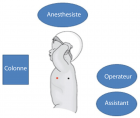
Figure 1
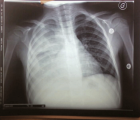
Figure 2

Figure 3
Similar Articles
-
Successful Therapy with intravenous gamma globulin in two children with postinfectious bronchiolitis obliteransSevgi Pekcan,Bahar Gökturk*, Ismail Reisli. Successful Therapy with intravenous gamma globulin in two children with postinfectious bronchiolitis obliterans. . 2017 doi: 10.29328/journal.jprr.1001003; 1: 009-012
-
Dysfunctional breathing in childrenAmanda MP Trompenaars#,Aalt PJ Van Roest#,Anja APH Vaessen-Verberne*. Dysfunctional breathing in children. . 2020 doi: 10.29328/journal.jprr.1001013; 4: 001-005
-
General practitioners’ knowledge, attitudes and practices on antibiotic prescribing for acute respiratory infections in children in Lubumbashi, Democratic Republic of CongoAubin Ndjadi Wembonyama Kasongo,Olivier Mukuku*,Gray A-Wakamb Kanteng,Mick Ya-Pongombo Shongo,André Kabamba Mutombo,Albert Mwembo-A-Nkoy Tambwe,Dieudonné Tshikwej Ngwej,Stanis Okitotsho Wembonyama,Oscar Numbi Luboya. General practitioners’ knowledge, attitudes and practices on antibiotic prescribing for acute respiratory infections in children in Lubumbashi, Democratic Republic of Congo. . 2020 doi: 10.29328/journal.jprr.1001015; 4: 011-017
-
“Vanishing” breast implant – when a breast prosthesis is moving into the pleural cavityThomas Grieser*,Daniel Popp,Stephan Raab,Thomas Berghaus. “Vanishing” breast implant – when a breast prosthesis is moving into the pleural cavity. . 2021 doi: 10.29328/journal.jprr.1001028; 5: 073-075
-
Pulmonary congenital cystic adenomatoid malformation: a rare congenital abnormality in adults and review of literatureIftikhar Ahmed Chaudhry*,Mohammad Nasim Khan,Yousif A Alqahtani,Abdullah Alghamdi,Othman M AlFraih,Meenal A AlAbdulhai,Ikram Ul-Haq Chaudhry. Pulmonary congenital cystic adenomatoid malformation: a rare congenital abnormality in adults and review of literature. . 2022 doi: 10.29328/journal.jprr.1001038; 6: 016-019
-
The thoracoscopic approach in the management of parapneumonic pleural effusion in childrenTaycir Cheikhrouhou*,Mahdi Ben Dhaou,Amal Elleuch,Manar Hbaieb,Mohamed Zouari,Mahfoudh Abdelmajid,Riadh Mhiri. The thoracoscopic approach in the management of parapneumonic pleural effusion in children. . 2022 doi: 10.29328/journal.jprr.1001041; 6: 025-029
-
Lung Abnormalities in Liver CirrhosisMuli Yaman*, Syifa Mustika. Lung Abnormalities in Liver Cirrhosis. . 2023 doi: 10.29328/journal.jprr.1001045; 7: 015-020
-
Effect of Azithromycin on Lung Function and Pulmonary Exacerbations in Children with Post-infectious Bronchiolitis Obliterans. A Double-blind, Placebo-controlled TrialCastaños Claudio*, Salin Maximiliano Felix, Pereyra Carla Luciana, Aguerre Veronica, Lucero Maria Belen, Bauer Gabriela, Zylbersztajn Brenda, Leviled Leonor, Gonzalez Pena Hebe. Effect of Azithromycin on Lung Function and Pulmonary Exacerbations in Children with Post-infectious Bronchiolitis Obliterans. A Double-blind, Placebo-controlled Trial. . 2024 doi: 10.29328/journal.jprr.1001052; 8: 009-014
Recently Viewed
-
Intelligent Design of Ecological Furniture in Risk Areas based on Artificial SimulationTorres del Salto Rommy Adelfa*, Bryan Alfonso Colorado Pástor*. Intelligent Design of Ecological Furniture in Risk Areas based on Artificial Simulation. Arch Surg Clin Res. 2024: doi: 10.29328/journal.ascr.1001083; 8: 062-068
-
Pancreatico-gastric FistulaRony Varghese*, Amal Upadhyay, Pawan Kumar Jaiprakah Maniyar. Pancreatico-gastric Fistula. J Clin Med Exp Images. 2024: doi: 10.29328/journal.jcmei.1001030; 8: 001-002
-
Treatment Outcome in Patients with Myofascial Orofacial Pain: A Randomized Clinical TrialAnders Wänman*, Susanna Marklund, Negin Yekkalam. Treatment Outcome in Patients with Myofascial Orofacial Pain: A Randomized Clinical Trial. J Oral Health Craniofac Sci. 2024: doi: 10.29328/journal.johcs.1001046; 9: 001-008
-
Hygiene and Care Protocols for Implant-supported Dental Prostheses in Patients with DiabetesHakob Khachatryan, Emma Boshnaghyan, Sevak Papoyan, Gagik Hakobyan*. Hygiene and Care Protocols for Implant-supported Dental Prostheses in Patients with Diabetes. J Oral Health Craniofac Sci. 2024: doi: 10.29328/journal.johcs.1001047; 9: 009-014
-
Advancing Oral Health and Craniofacial Science through Microchip ImplantsShekufeh Shafeie*. Advancing Oral Health and Craniofacial Science through Microchip Implants. J Oral Health Craniofac Sci. 2024: doi: 10.29328/journal.johcs.1001048; 9: 015-018
Most Viewed
-
Evaluation of Biostimulants Based on Recovered Protein Hydrolysates from Animal By-products as Plant Growth EnhancersH Pérez-Aguilar*, M Lacruz-Asaro, F Arán-Ais. Evaluation of Biostimulants Based on Recovered Protein Hydrolysates from Animal By-products as Plant Growth Enhancers. J Plant Sci Phytopathol. 2023 doi: 10.29328/journal.jpsp.1001104; 7: 042-047
-
Sinonasal Myxoma Extending into the Orbit in a 4-Year Old: A Case PresentationJulian A Purrinos*, Ramzi Younis. Sinonasal Myxoma Extending into the Orbit in a 4-Year Old: A Case Presentation. Arch Case Rep. 2024 doi: 10.29328/journal.acr.1001099; 8: 075-077
-
Feasibility study of magnetic sensing for detecting single-neuron action potentialsDenis Tonini,Kai Wu,Renata Saha,Jian-Ping Wang*. Feasibility study of magnetic sensing for detecting single-neuron action potentials. Ann Biomed Sci Eng. 2022 doi: 10.29328/journal.abse.1001018; 6: 019-029
-
Pediatric Dysgerminoma: Unveiling a Rare Ovarian TumorFaten Limaiem*, Khalil Saffar, Ahmed Halouani. Pediatric Dysgerminoma: Unveiling a Rare Ovarian Tumor. Arch Case Rep. 2024 doi: 10.29328/journal.acr.1001087; 8: 010-013
-
Physical activity can change the physiological and psychological circumstances during COVID-19 pandemic: A narrative reviewKhashayar Maroufi*. Physical activity can change the physiological and psychological circumstances during COVID-19 pandemic: A narrative review. J Sports Med Ther. 2021 doi: 10.29328/journal.jsmt.1001051; 6: 001-007

HSPI: We're glad you're here. Please click "create a new Query" if you are a new visitor to our website and need further information from us.
If you are already a member of our network and need to keep track of any developments regarding a question you have already submitted, click "take me to my Query."










